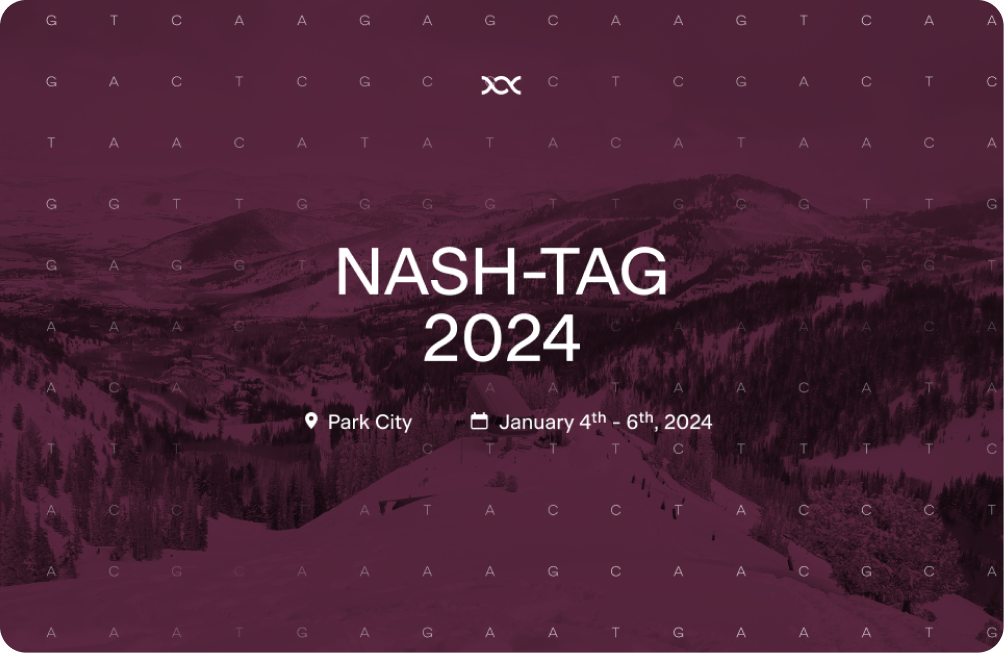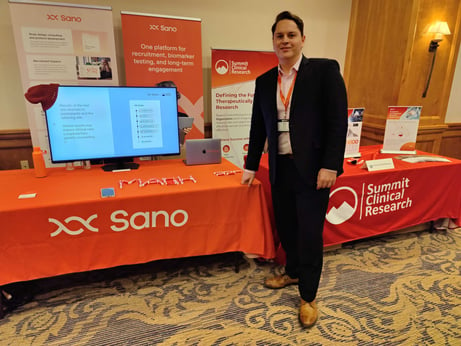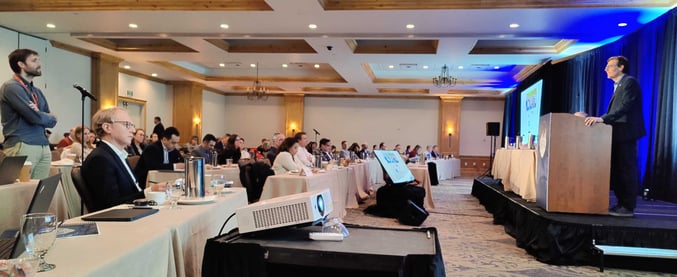Valuable insights and expert connections: A recap of NASH-TAG

Last week, we attended the NASH-TAG conference in beautiful Park City, Utah. Against a winter wonderland backdrop, we dove deep into the latest research on metabolic associated steatohepatitis (MASH, also known as non-alcoholic steatohepatitis or NASH) and connected with leading experts in the field. Here, we’ll share some of our key learnings, underscoring the evolving landscape of liver disease research.
Conference highlights
Among the many enlightening presentations at the conference, three particularly captured our attention for their innovative approach and focus on genetic aspects in the field of liver disease research. These talks stood out for their depth of insight and groundbreaking perspectives, offering a glimpse into the future of NASH/MASH treatment and understanding.

Understanding the role of genetics in NASH/MASH: Dr. Stefano Romeo from the University of Gothenburg presented insights into the genetic factors influencing the development and progression of NASH/MASH. He emphasised that lifestyle and environmental factors can trigger genetic predispositions to NASH/MASH, which marks a crucial step forward in our understanding of the disease. In addition, Dr. Romeo's discussion of polygenic risk scores and the potential of genetics in therapeutics led to interesting discussions about targeted treatment strategies, particularly for high-risk groups.
Advancements in lipid droplet biology: Dr. Jay D. Horton from UT Southwestern Medical Center brought to light the complexities of lipid droplet biology in metabolic dysfunction-associated steatotic liver disease (MASLD). His focus on the interplay of various genes in lipogenesis provided a deeper understanding of the disease's mechanisms. Learning more about the PNPLA3/SREBP-1 pathway was particularly intriguing, especially considering the potential for siRNA therapies.
Exploring gene and cell therapy options: Dr. Scott L. Friedman from the Icahn School of Medicine at Mount Sinai provided an exciting glimpse into the future of NASH/MASH treatments in his discussion on mRNA editing and the innovative use of lipid nanoparticles to produce CAR-T cells. These cutting-edge approaches underscore the rapid advancements being made in the field.

Conclusion
Beyond the knowledge gained, one of the most gratifying aspects of the conference was the opportunity to connect with experts and peers. The conference broadened our understanding of MASH/NASH and reinforced our commitment to staying updated with the latest research and developments in therapy. The practical insights and knowledge gained from the various talks and discussions have energised our team. This experience will play a crucial role in shaping our future projects and initiatives, as we aim to contribute meaningfully to the field and work towards improving patient outcomes.
To learn more about the genetics of MASH/NASH, download our whitepaper:

